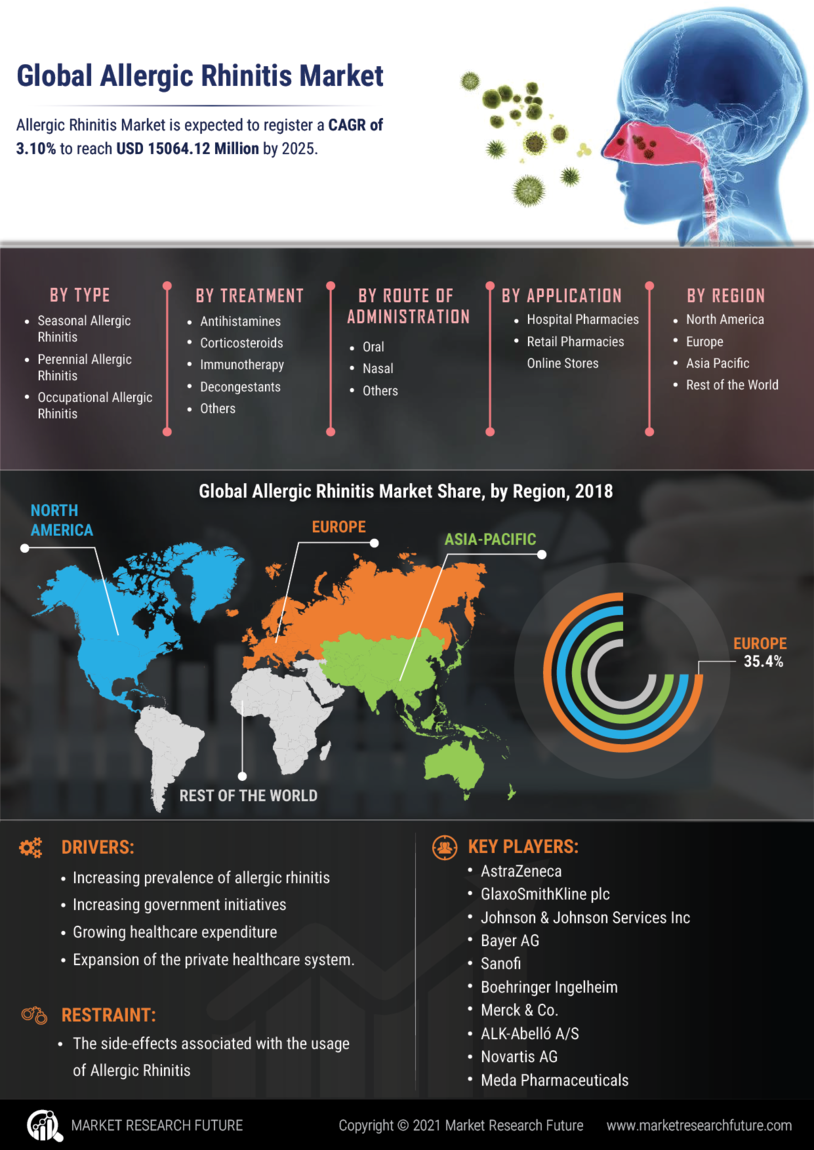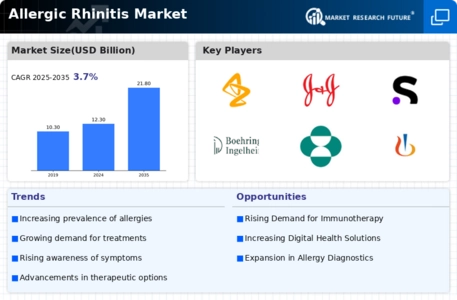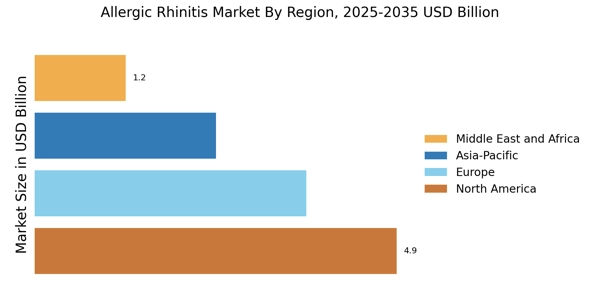Rising Awareness and Education
Rising awareness and education regarding allergic rhinitis are crucial drivers for the Allergic Rhinitis Market. As healthcare professionals and organizations emphasize the importance of recognizing and managing allergic rhinitis, patients are becoming more informed about their condition. This increased awareness is likely to lead to higher diagnosis rates and, consequently, greater demand for treatment options. Educational campaigns and resources aimed at both patients and healthcare providers are essential in promoting understanding of allergic rhinitis. The market may witness a surge in demand for over-the-counter medications and prescription therapies as individuals seek relief from symptoms, thereby contributing to the overall growth of the Allergic Rhinitis Market.
Impact of Climate Change on Allergens
The impact of climate change on allergens is becoming increasingly evident, influencing the Allergic Rhinitis Market. Changes in weather patterns and rising temperatures are contributing to longer pollen seasons and increased allergen exposure. This phenomenon is likely to result in a higher incidence of allergic rhinitis, as more individuals are affected by seasonal allergies. The market may experience growth as healthcare providers and pharmaceutical companies respond to this trend by developing new treatments and preventive measures. Additionally, the heightened awareness of environmental factors contributing to allergic rhinitis may drive demand for educational resources and innovative solutions within the Allergic Rhinitis Market.
Technological Advancements in Treatment
Technological advancements in treatment options for allergic rhinitis are transforming the Allergic Rhinitis Market. Innovations such as sublingual immunotherapy and biologics are gaining traction, offering patients more effective and targeted therapies. The introduction of these advanced treatment modalities is likely to enhance patient compliance and satisfaction, as they often present fewer side effects compared to traditional medications. Furthermore, the market for biologics is projected to grow significantly, with estimates suggesting a compound annual growth rate of over 10% in the next few years. This trend indicates a shift towards more personalized and effective treatment strategies, which could reshape the landscape of the Allergic Rhinitis Market.
Increase in Allergic Rhinitis Prevalence
The prevalence of allergic rhinitis appears to be on the rise, driven by various environmental factors and lifestyle changes. According to recent estimates, approximately 10 to 30% of the population is affected by this condition, which is expected to increase in the coming years. This growing incidence is likely to propel the Allergic Rhinitis Market, as more individuals seek effective treatment options. The increasing awareness of allergic rhinitis and its impact on quality of life may also contribute to higher demand for medications and therapies. As healthcare providers recognize the importance of addressing this condition, the market is poised for expansion, with a focus on innovative solutions that cater to the needs of patients suffering from allergic rhinitis.
Growing Demand for Over-the-Counter Products
The growing demand for over-the-counter (OTC) products is a notable trend within the Allergic Rhinitis Market. Many patients prefer OTC medications due to their accessibility and convenience, which allows for self-management of symptoms. The market for OTC antihistamines and nasal sprays has expanded significantly, with sales figures indicating a steady increase in consumer spending on these products. This trend is likely to continue as more individuals seek immediate relief from allergic rhinitis symptoms without the need for a prescription. The rise in self-medication practices may further bolster the Allergic Rhinitis Market, as consumers become more proactive in managing their health.


















Leave a Comment